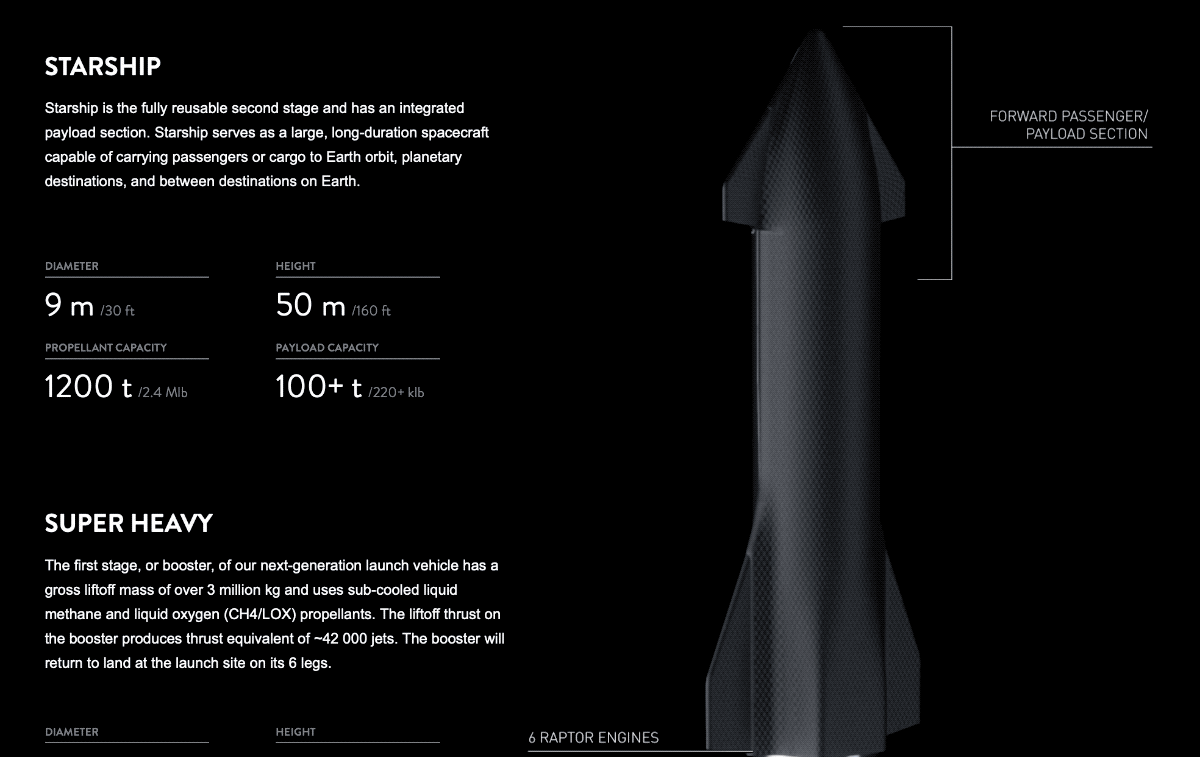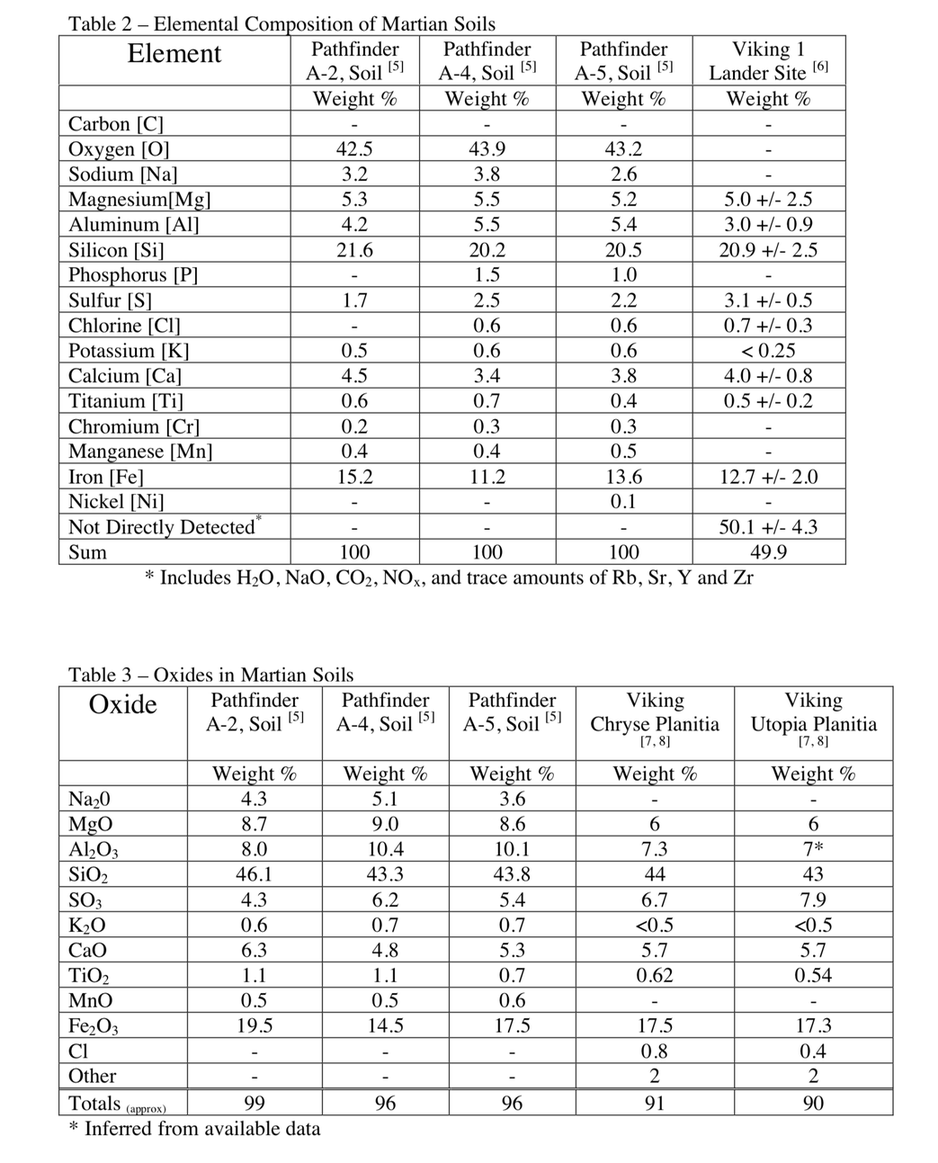October 21, 2019
Questions on Starship and Falcon Heavy
An hour long talk and Q&A by the SpaceX Principal Mars Development Engineer Paul Wooster discusses the companies plans to put people on Mars in 6 years.
There are a lot of interesting and impressive items in this presentation, some of which impress on a more visceral level than a technical one.

"Principal Mars Development Engineer!" Is there a cooler real world job title!?
Interestingly, while it has previously been sort of hinted at, Wooster here specifically states that the first manned rockets will be one way affairs.
While the later vehicles are slated to make round trips and return, this confirmation presents in a fairly stark fashion that Musk and company are serious about a permanent human presence.
While that's fraught to be sure, few truly great things are done without risk.
The 21st century seems to finally be arriving.
There are a lot of interesting and impressive items in this presentation, some of which impress on a more visceral level than a technical one.

Interestingly, while it has previously been sort of hinted at, Wooster here specifically states that the first manned rockets will be one way affairs.
Wooster also said the first spaceships will likely serve as homes for astronauts. This may not be the most comfortable setup, but it could reduce mission complexity and development by skipping the need to immediately build Mars habitats.
While the later vehicles are slated to make round trips and return, this confirmation presents in a fairly stark fashion that Musk and company are serious about a permanent human presence.
While that's fraught to be sure, few truly great things are done without risk.
The 21st century seems to finally be arriving.
Posted by: The Brickmuppet at
05:37 PM
| Comments (1)
| Add Comment
Post contains 185 words, total size 2 kb.
October 06, 2019
"Cadet Corbet, Report to the Launch Pad."
This is just the most AWESOME looking thing.

Musk is saying that once this thing makes it to twenty kilometers up and safely back down, then the following launch will be to orbit.
Crewed flights will follow in short order.
Space-X has massively updated their Starship page. See here.
Musk's decision to use simpler field serviceable materials, mainly stainless steel in the construction of his new rockets means that the main production bottleneck is the big Raptor engines. The production capacity of those engines and their practical number of resuses for each will determine the pace of the construction program. Naturally, increasing raptor production is getting a lot of attention.
While there are very complex pieces of kit going into these ships (like life support systems in the manned ones) they are, on balance not terribly complex compared than contemporary aircraft or ships.
This has some interesting implications for mass production given that Musk is doing this as a crash program. because constructing a 300-400 ton stainless steel spacecraft stack, is probably not much more of an investment in relative terms than a 1200 ton destroyer was in WW1, (273 ships in ~2 years). While those numbers are far beyond the ken of a single midsized company with two production facilities, they do indicate that if production methods are nailed down, in a few years a score or more of these things might be produced.

The stainless steel construction is even more interesting in the context of in-situ repairs on Mars. Steel is easily workable and while stainless steel is less so its far more so than titanium or composites and can be repaired in the field.
Morever, while Space-X's plans to produce fuel on mars are well known it should be noted that Martian soil is mostly iron oxide and the martian atmosphere is 1/3 carbon, so steel is readily available given some modest infrastructure. While stainless steel and steel are hard to weld together, it is not impossible to do so, and it's conceivable that a damaged ship on Mars might be repaired sufficiently to get into Earth orbit.
In the much longer term with enhanced infrastructure, it gets better. You see, the materials for making stainless steels are varying proportions of iron ore, chromium, silicon, nickel, carbon, nitrogen, and manganese. If one takes a deep dive into the biologically obnoxious Martian Regolith, one finds the following proportions:

Note the presence, albeit sometimes in minute concentrations of everything except nitrogen which is mainly used as a substitute for nickel, which is found in minute quantities only at the pathfinder landing site. Fortunately, floating above the dirt is the martian atmosphere which is 2.7% Nitrogen. These are minute quantities to be sure and probably not practical for extraction at an early base, but this is only the surface dirt and their presence there indicates that there is more to be found.
If Space-X doesn't faceplant, which is not beyond the realm of posibility, then there is the very real potential for the next decade to see scores, if not hundreds of these ships built to carry people, quite possibly settlers, to Mars, the Moon and the asteroids.

Resizing animated .gifs without breaking them and embedding .MP4s is currently beyond our ability so click here for the full thing.
Musk is saying that once this thing makes it to twenty kilometers up and safely back down, then the following launch will be to orbit.
Crewed flights will follow in short order.
Space-X has massively updated their Starship page. See here.
Musk's decision to use simpler field serviceable materials, mainly stainless steel in the construction of his new rockets means that the main production bottleneck is the big Raptor engines. The production capacity of those engines and their practical number of resuses for each will determine the pace of the construction program. Naturally, increasing raptor production is getting a lot of attention.
While there are very complex pieces of kit going into these ships (like life support systems in the manned ones) they are, on balance not terribly complex compared than contemporary aircraft or ships.
This has some interesting implications for mass production given that Musk is doing this as a crash program. because constructing a 300-400 ton stainless steel spacecraft stack, is probably not much more of an investment in relative terms than a 1200 ton destroyer was in WW1, (273 ships in ~2 years). While those numbers are far beyond the ken of a single midsized company with two production facilities, they do indicate that if production methods are nailed down, in a few years a score or more of these things might be produced.

"But wait, there's more!"
The stainless steel construction is even more interesting in the context of in-situ repairs on Mars. Steel is easily workable and while stainless steel is less so its far more so than titanium or composites and can be repaired in the field.
Morever, while Space-X's plans to produce fuel on mars are well known it should be noted that Martian soil is mostly iron oxide and the martian atmosphere is 1/3 carbon, so steel is readily available given some modest infrastructure. While stainless steel and steel are hard to weld together, it is not impossible to do so, and it's conceivable that a damaged ship on Mars might be repaired sufficiently to get into Earth orbit.
In the much longer term with enhanced infrastructure, it gets better. You see, the materials for making stainless steels are varying proportions of iron ore, chromium, silicon, nickel, carbon, nitrogen, and manganese. If one takes a deep dive into the biologically obnoxious Martian Regolith, one finds the following proportions:

Note the presence, albeit sometimes in minute concentrations of everything except nitrogen which is mainly used as a substitute for nickel, which is found in minute quantities only at the pathfinder landing site. Fortunately, floating above the dirt is the martian atmosphere which is 2.7% Nitrogen. These are minute quantities to be sure and probably not practical for extraction at an early base, but this is only the surface dirt and their presence there indicates that there is more to be found.
If Space-X doesn't faceplant, which is not beyond the realm of posibility, then there is the very real potential for the next decade to see scores, if not hundreds of these ships built to carry people, quite possibly settlers, to Mars, the Moon and the asteroids.
Posted by: The Brickmuppet at
03:06 PM
| Comments (5)
| Add Comment
Post contains 560 words, total size 5 kb.
<< Page 1 of 1 >>
32kb generated in CPU 0.0166, elapsed 0.0962 seconds.
69 queries taking 0.0866 seconds, 234 records returned.
Powered by Minx 1.1.6c-pink.
69 queries taking 0.0866 seconds, 234 records returned.
Powered by Minx 1.1.6c-pink.









